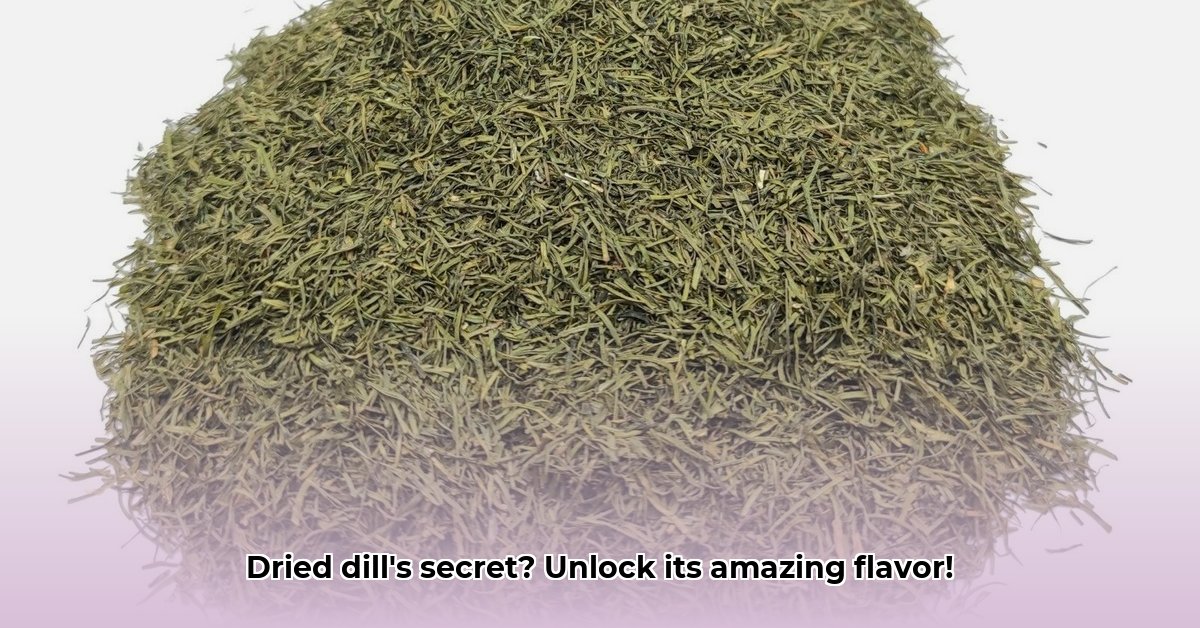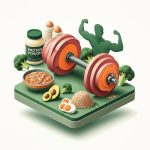Ever peeked at that jar of dried dill in your spice rack and wondered, “What’s the big deal?” It might seem like a quiet spice, but dried dill packs a surprising punch! It’s incredibly versatile, boasting a subtly sweet and slightly tangy flavor with a hint of anise. For another example of preserving flavor, check out this guide on [freezing honey](https://chaztin.com/does-honey-freeze/). This guide dives deep into everything dried dill: how its flavor compares to fresh dill, the hidden nutritional goodies inside, and—most importantly—how to use it to make your food taste amazing. We’ll walk you through picking the best dill, storing it right so it stays flavorful, and sharing some easy recipes that’ll show you just how much this little herb can do. Whether you’re a cooking pro or just starting out, get ready to discover the magic of dried dill!
Dried Dill: A Flavorful Secret Weapon in Your Kitchen
(Unlocking Culinary Potential)
Dried dill, that often-overlooked spice in your cupboard, is a culinary powerhouse waiting to be unleashed. Its versatility extends far beyond the usual suspects, offering a surprising range of flavor possibilities that will elevate your everyday cooking by offering a unique aromatic twist that blends herbaceous goodness into dishes. Let’s unlock its potential together!
Culinary Adventures with Dried Dill
(Flavoring Dishes Worldwide)
Dried dill, with its bold, slightly sweet, and subtly tangy notes, adds a depth of flavor that’s hard to replicate. Forget about thinking of it only as a potato garnish; it’s a star ingredient in many cuisines worldwide. It’s used to enhance the flavors of vibrant salads and simple scrambled eggs, adding a burst of unexpected flavor to complement fish, chicken, and lamb.
Think creamy soups brimming with herbaceous goodness? Dried dill is your secret weapon. Imagine hearty stews, their rich flavors enhanced by a sprinkle of this aromatic spice. Picture vibrant salads, their fresh tastes complemented by dill’s earthy complexity. Even your simple scrambled eggs can benefit from a dash of dried dill, adding a burst of unexpected flavor. It beautifully complements fish, chicken, and lamb, adding a touch of sophistication to your main courses. It shines in many Middle Eastern recipes by adding a unique flavor to fish and lamb dishes.
Beyond Western cuisine, dried dill plays a significant role in Middle Eastern and Eastern European dishes. It’s often found in flavorful sauces, zesty marinades, and sprinkled generously over grilled meats, providing a unique aromatic twist. And let’s not forget pickling! Dried dill is a classic pickling companion, infusing cucumbers, carrots, and onions with a uniquely savory flavor profile that’s simply irresistible. Its concentrated flavor works wonders in creating those tangy and unforgettable pickled treats.
The Nutritional Profile of Dried Dill
(Vitamins and Minerals)
Don’t underestimate this tiny, unassuming spice – dried dill is surprisingly nutritious! While the exact nutrient content can vary based on factors like growing conditions and processing methods, it’s generally considered a good source of several essential vitamins and minerals. You’ll find that it contributes to your daily intake of vitamin A, vital for eye health and a strong immune system. A balanced diet including dried dill gives a decent amount of vitamin C, a powerful antioxidant that helps protect your cells from damage. Plus, dried dill boasts minerals like iron, crucial for red blood cell production, and calcium, essential for healthy bones and teeth. Adding dried dill to your meals is a simple way to boost your nutritional intake and contribute to a balanced diet. However, it’s important to remember that while dried dill offers these nutrients, it shouldn’t be seen as a primary source, and a varied diet remains key.
Here’s a more detailed breakdown of the nutritional content per tablespoon (approximately 1.7 grams) of dried dill:
- Calories: Approximately 4
- Total Fat: 0.2 grams
- Cholesterol: 0 milligrams
- Sodium: 1 milligram
- Total Carbohydrates: 0.7 grams
- Dietary Fiber: 0.6 grams
- Sugars: 0.1 grams
- Protein: 0.3 grams
- Vitamin A: 83 micrograms
- Vitamin C: 1.6 milligrams
- Calcium: 26 milligrams
- Iron: 0.6 milligrams
- Potassium: 43 milligrams
- Magnesium: 2 milligrams
- Phosphorus: 3 milligrams
These small amounts of nutrients can still contribute to your daily needs, especially when dill is used regularly in cooking.
Understanding the Flavor Profile of Dried Dill
(Intense and Concentrated Taste)
Compared to fresh dill’s lighter, more delicate flavor, dried dill presents a more intense and concentrated taste. The drying process concentrates the aromatic compounds, leading to a bolder flavor experience. However, some of the more subtle nuances might get lost during dehydration. Expect a slightly sweet and tangy taste, often accompanied by a subtle hint of anise. The quality of your dried dill will greatly impact the final flavor; vibrant green color and a strong, pleasant aroma are key indicators of high-quality, flavorful dill. Keep an eye out for dull-colored or musty smelling dill; these are signs of poor quality and likely a less flavorful result.
Dried dill seeds, on the other hand, offer a different flavor profile altogether. They are more pungent and slightly bitter, with hints of caraway. Dill seeds are commonly used in pickling and can add a warm, earthy note to dishes.
Sourcing, Storing, and Selecting High-Quality Dried Dill
(Maximizing Culinary Potential)
Picking the right dried dill is paramount for maximizing its culinary potential. When shopping, look for whole, unbroken leaves with a deep, rich green color and a strong, inviting aroma. Avoid anything that looks dull, faded, or has a musty odor – this suggests the dill might have been improperly stored or is past its prime.
Purchasing from reputable spice brands or stores with high turnover rates can also increase the likelihood of getting fresher, more flavorful dried dill. Consider buying smaller quantities more frequently to ensure you’re always using dill at its peak. Some stores even offer dried dill in airtight packets, which can help to protect it from light and moisture.
Proper storage is essential for preserving the flavor and extending the shelf life of your dried dill. Store it in an airtight container, away from light, heat, and moisture. A cool, dark, and dry cupboard is ideal. Under these conditions, your dried dill should retain its vibrant flavor and aroma for several months.
Delicious Dried Dill Recipes: Simple and Flavorful
(Easy Dishes to Enhance Flavor)
Ready to put your newfound knowledge to the test? Here are a few simple yet impressive recipes that let the unique flavor of dried dill shine:
1. Roasted Dill Potatoes:
- Ingredients: 1 lb small potatoes (halved), 2 tbsp olive oil, 1 tbsp dried dill, salt and pepper to taste.
-
Instructions:
- Preheat your oven to 400°F (200°C).
- Toss the halved potatoes with olive oil, dried dill, salt, and pepper. Make sure they’re evenly coated.
- Spread them in a single layer on a baking sheet.
- Roast for 20-25 minutes, or until tender and slightly browned. The roasting process helps to intensify the dill’s flavor.
2. Creamy Dill Chicken:
- Ingredients: 1 lb boneless, skinless chicken breasts, 1 tbsp butter, 1 tbsp flour, 1 cup chicken broth, ½ cup heavy cream, 1 tbsp dried dill, salt and pepper to taste.
-
Instructions:
- Sauté the chicken breasts in butter until cooked through.
- Sprinkle in the flour and stir to create a roux.
- Gradually whisk in the chicken broth, stirring constantly until the sauce thickens.
- Stir in the heavy cream and dried dill.
- Season with salt and pepper to taste. Serve over rice or pasta.
3. Zesty Dill Salad Dressing:
- Ingredients: ¼ cup olive oil, 2 tbsp lemon juice, 1 tbsp dried dill, 1 clove minced garlic, salt and pepper to taste.
-
Instructions:
- This is a simple whisk-together dressing. Combine all ingredients in a bowl.
- Whisk well until everything is thoroughly blended.
- Taste and adjust seasoning as needed. This dressing pairs exceptionally well with fresh green salads.
4. Dill-Pickled Cucumbers:
-
Ingredients: 4 cups sliced cucumbers, 1 cup white vinegar, 1 cup water, 1/4 cup sugar, 2 tablespoons dried dill seeds, 1 tablespoon salt, 2 cloves garlic (minced), 1/2 teaspoon mustard seeds.
-
Instructions:
- Combine vinegar, water, sugar, dill seeds, salt, garlic, and mustard seeds in a saucepan. Bring to a boil, stirring until sugar and salt are dissolved.
- Place cucumber slices in a heat-safe jar or container.
- Pour the hot vinegar mixture over the cucumbers, ensuring they are fully submerged.
- Let cool completely, then refrigerate for at least 4 hours before serving. These pickles will become more flavorful as they sit.
These are just a few ideas – feel free to
- Gluten Free Meal Prep Ideas for Delicious, Hassle-Free Eating - November 28, 2025
- Gluten Free Meal Prep for Stress-Free and Healthy Eating - November 27, 2025
- Quick And Easy Chicken Thigh Meal Prep For Weight Loss - November 26, 2025










